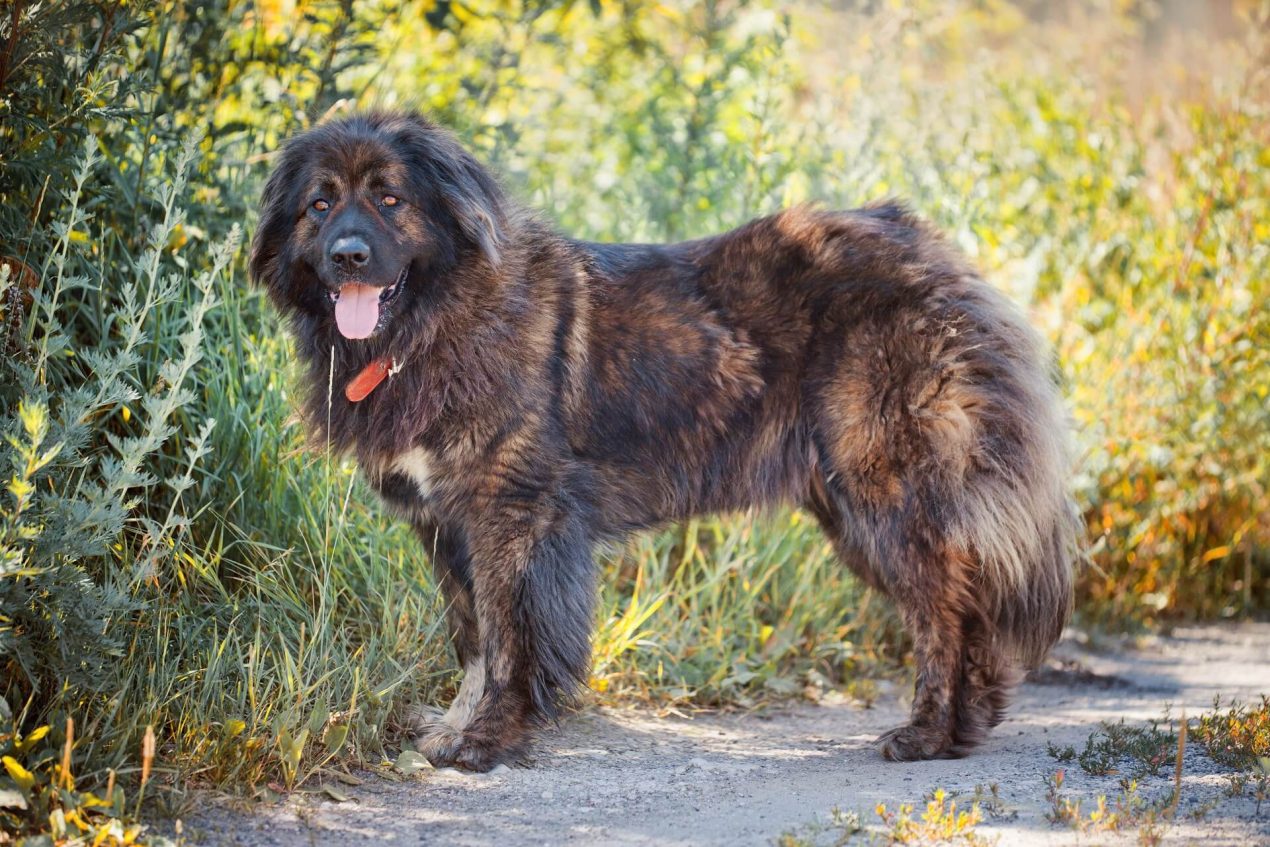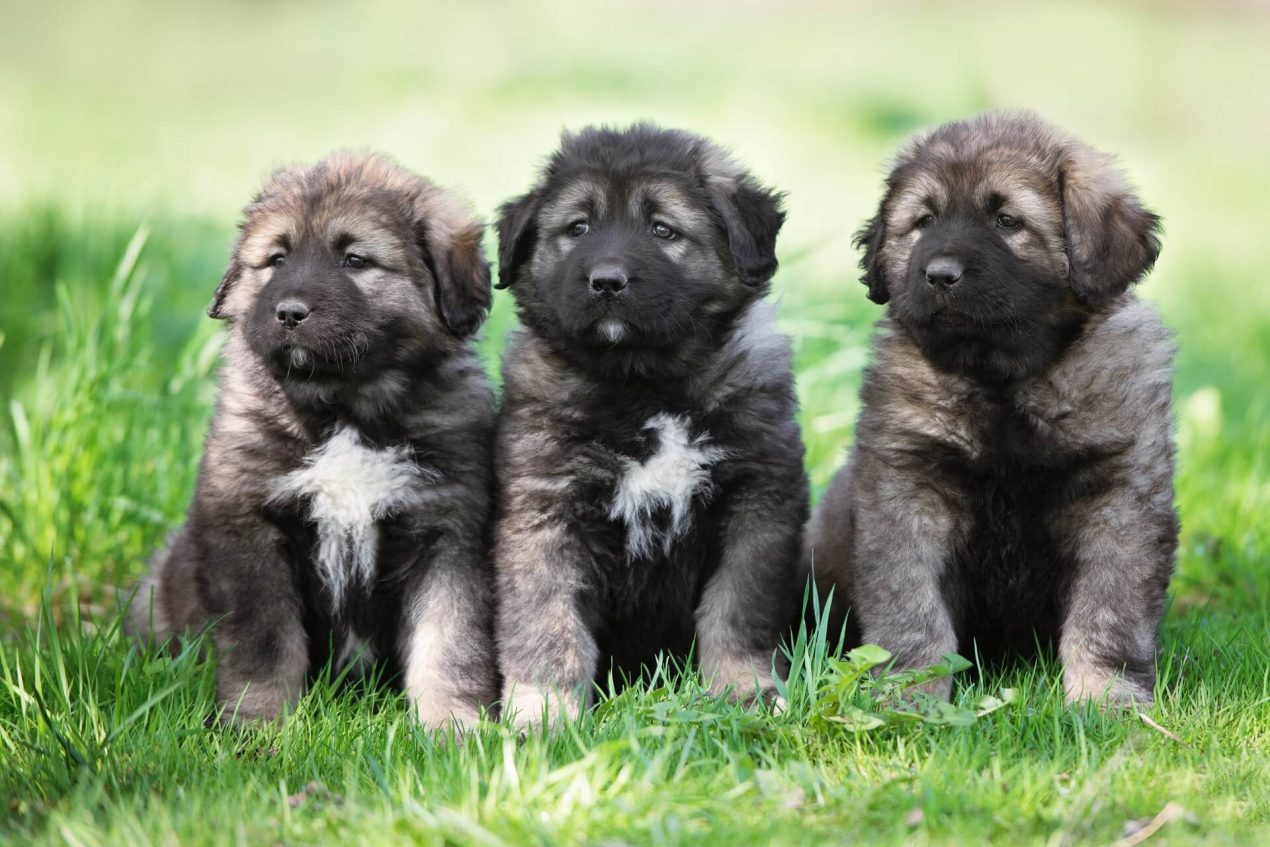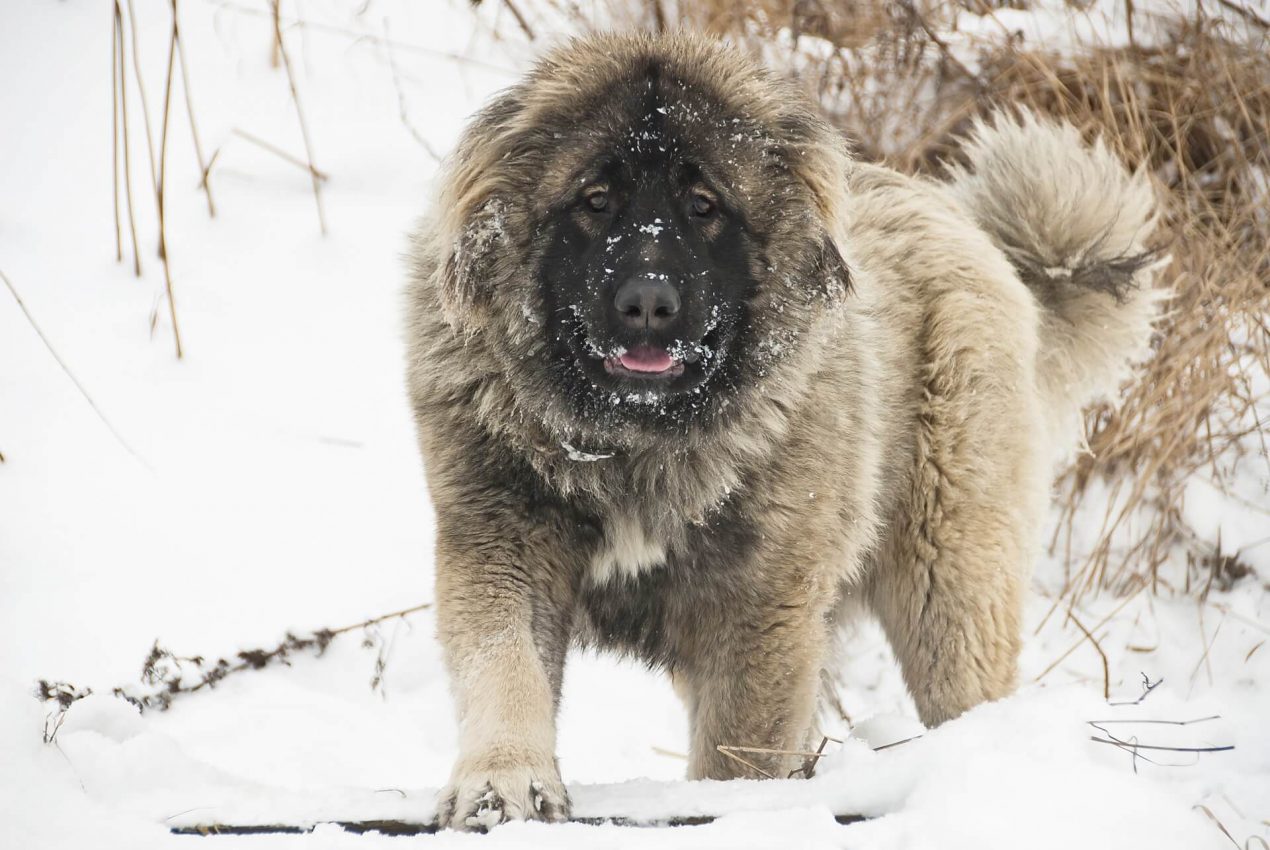Originally bred to protect flocks and their shepherds from wolves and bears, the Caucasian Shepherd presents itself as a fearless dog with a natural sharpness in the face of danger. On the other hand, this strong-willed giant also demonstrates itself as an affectionate and balanced family member with unwavering self-confidence. Whether a Caucasian Shepherd is a suitable new companion for you and what you should know about its care is explained here.
History of the Caucasian Shepherd
The impressive dog breed has its roots in present-day Russia. There, the large and robust Caucasian Shepherd Dog or Kavkazskaïa Ovtcharka is widespread. The breed was kept in all zones of the former Soviet Union, with the exception of the polar zone where these dogs are rare. Depending on the region of origin, the physical attributes may vary slightly. For instance, dogs bred in steppe areas are lighter and taller, while those from mountain regions are heavier and more compact. However, the region does not play a role in their character.
The Caucasian Shepherd has been bred for herding and protection for centuries. The outstanding qualities of these archaic dogs were crucial for the emergence of livestock farming over 10,000 years ago. To this day, the breed has a clear understanding of its tasks and excellent instincts. They fearlessly confront wolves and bears. Toward their owners, they are affectionate and extremely loyal. The Caucasian Shepherd becomes dangerous when it senses a threat. Toward strangers, it is reserved, and due to its natural distrust, it makes the perfect guard and protector.
The Caucasian Shepherd was officially recognized by the FCI in 1984. The Caucasian Shepherd Club of America in the AKC was founded in the United States in 1957.
Breed Overview
GROUP: Working
HEIGHT: 23 to 30 inches
WEIGHT: 99 to 170 pounds
TEMPERAMENT: Loyal, courageous, protective
COAT: Medium-length double coat
COAT COLOR: Agouti and white, black and gray, cream, fawn, gray, grizzle, red, rust, sable, or white with/without white markings, piebald, or brindle markings
HYPOALLERGENIC: No
LIFE SPAN: 10 to 12 years
Nature and Character
If the Caucasian Shepherd lacks anything, it is not self-confidence. The breed is known for being highly independent and can cope very well on its own. In their homeland, these dogs had to protect and guard their entrusted herds for days in all weather conditions. Consequently, members of the breed find it easy to do without human company. However, this also means that these impressive animals find it difficult to submit.
Even if you adopt a Caucasian Shepherd puppy and integrate it into the family from an early age, you will notice that these dogs retain their independence and do not feel the need to please. Accordingly, training these powerhouses is an endless task. However, this dog breed would protect its owner with all its might against any danger.
When a Caucasian Shepherd becomes aggressive, attackers stand no chance. Regardless of the Caucasian Shepherd’s size and weight, its biting force is enormous. So, it doesn’t have to be the largest Caucasian Shepherd to have a fearless protector by your side. Despite their independence and wilfulness, it also has a calm and balanced side, which it gladly shows to its owner.
| Affection Level | Medium |
| Friendliness | Low |
| Kid-Friendly | Medium |
| Pet-Friendly | Low |
| Exercise Needs | Medium |
| Playfulness | Low |
| Energy Level | Medium |
| Trainability | Medium |
| Intelligence | High |
| Tendency to Bark | Low |
| Amount of Shedding | High |

Acquiring
Gaining experience with the Caucasian Shepherd as a “new dog owner” is not advisable. The breed is truly only suitable for experienced dog owners who do not shy away from a real challenge and can create an appropriate environment for these oversized animals. Even experienced dog owners should carefully consider acquiring a Caucasian Shepherd because of the breed’s special characteristics, origin, and history.
Since keeping the Caucasian Dog demands a lot from the owner, they should seek advice from a breeder beforehand. Only if the complete environment is suitable, and you are willing to invest the necessary time and energy, will the Caucasian Shepherd not pose a danger.
What to Consider When Buying?
In general, there are only a few breeders of the Caucasian Shepherd in the english-speaking region. A reputable breeder of the breed will not easily give away puppies but will engage with the buyer and carefully assess whether they are capable of meeting the demands of such a challenging breed. Naturally, all animals from reputable breeders undergo veterinary examinations, and they are only handed over after being vaccinated and dewormed.
To make a decision, the breeder will ask many questions about your living conditions and provide you with the opportunity to meet the parent animals.
Caucasian Shepherd breeders who do not encourage potential puppy buyers to get to know them are generally not official breeders, and caution is advised.
Development and Training of the Puppy
As fluffy and innocent as Caucasian Shepherd puppies may appear, they pose a significant challenge. Even in the first weeks, these cute little ones develop their own minds, and suspicion of strangers is already evident in young animals. With loving and consistent training, the puppies will grow into loyal dogs. It is crucial to start socialization early because only then is it possible to integrate the breed into the family and assign a clear role that it accepts.
Even with children within the family, the Caucasian Shepherd can harmonize if under expert guidance and kept in a species-appropriate manner. Despite all socialization and training, representatives of this dominant breed cannot easily coexist with other dogs or cats.
It is important not to further encourage the natural protective instinct in training; therefore, guard dog training is counterproductive and an absolute no-go. On the other hand, companion dog training can be highly recommended, as it promotes a harmonious coexistence between humans and the Caucasian Shepherd.

How to Keep a “Caucasian Shepherd”?
In the homeland of the Caucasian Shepherd, the animals enjoy a lot of space, making their keeping in our society challenging. The animal should have access to a truly large and secured property. Under no circumstances is the Ovcharka suitable as a indoor dog. Even though these animals do not have high exercise needs, it is still essential that they can move freely in a large area. In addition to a sturdy fence, a visual barrier is recommended, as these attentive guardians may react and go into defense mode at the slightest sign of trouble.
Activities
If you feel confident about keeping a Caucasian Shepherd, you should spend time with him accordingly. Only by spending time with him and engaging him in meaningful activities will he remain balanced. While this dog breed is not suitable for hours of biking, it does get into motion during joint activities and enjoys the combination of movement and being with “his people.” Targeted companion dog training is a good way to engage in shared activity.
Health and Grooming
This dog breed is generally low-maintenance and undemanding. However, a thorough brushing is advisable during its biannual shedding periods. Purebred animals from reputable breeding are also very robust health-wise and not burdened with hereditary diseases. Patience is required in feeding as the animals can be selective, even though they do not have special dietary requirements.

Do you have a Caucasian Shepherd or are you planning to get one? Share in the comments what, in your opinion, makes them special!


